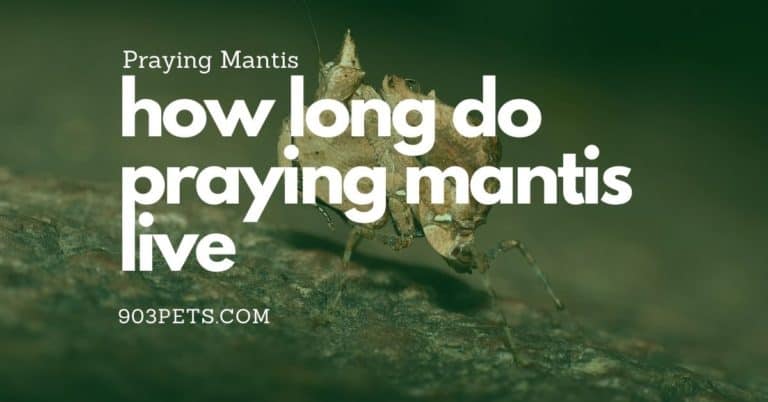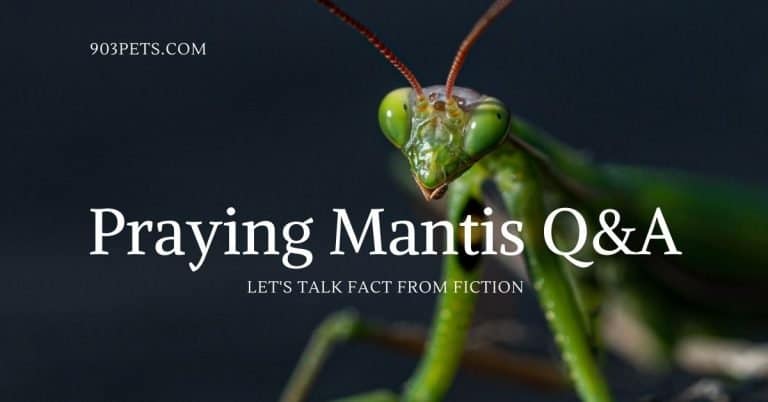Snail Terrarium (Vivarium) Decor: Creating a Natural Habitat
Creating a snail terrarium can be a fun, educational project for the whole family. Whether you’re looking to create a natural habitat or one that’s more of an imaginative scene, it can all be done with some careful planning and thought.
Read on for tips on how to decorate your own snail terrarium!
Snail Species Needs
Not every snail comes from the same environmental conditions. Some snails are found in arid regions, while others thrive in tropical rainforests. A well-created terrarium or vivarium will include plants that come from the snails ‘home’ region or at least replicate that environment to some extent.

For example, if you’re planning on keeping snails from the rainforest, including plants that grow in humid forest conditions like ferns and moss. Try to avoid including tropical plants that will quickly dry out the soil or large desert-dwelling plants which could be potentially harmful if eaten by your snail.
One thing all snails have in common is a need for moisture to survive. But, that does not mean you need to put in a water dish for them. That could be dangerous.
Read on.
Tip: If you’re unsure of a particular plant for your snail, you can go to your local library or bookstore and check out books on gardening with succulent plants. We have a list of our favorite snail terrarium plants as well.
Substrate – The Foundation
The substrate is what you’ll be using to fill up the bottom of your terrarium. Think about if you’re looking for realism or a more imaginative, unique look.
If realism is your goal, then stick with basic soil or potting mix that won’t interfere with drainage by adding gravel or other materials to help with that. Be sure you are using peat-free soil that has no fertilizers or other chemicals. Snails need a higher pH level environment (lower acidity).
If you want more of a unique look, consider using sand or pebbles to create beach scenes or piles of colorful stones for more fantastical looks. Pebbles can be found in any craft store. Not only are they inexpensive, but there are plenty of colors and sizes to choose from.
Also, keep in mind what color of substrate you’ll be using when picking out plants. For example, white sand won’t show off dark-colored plants that well.
Finally, you might decide to use soil from your garden or yard. If you do this, we recommend sterilizing the soil in your oven before using it in the terrarium. This will help remove any unhealthy critters or pathogens giving you the best chance of success.
To sterilize soil in your oven, use an oven-safe pan.
- Place the soil, no more than 4″ deep, into the pan.
- Turn the oven on and set to Bake at 200 degrees Fahrenheit.
- Dampen the soil. The steam helps kill off the bad stuff.
- Cover with Aluminum Foil and seal.
- Bake the soil for an hour and a half. (1.5 hours)
- Check the temperature of the soil has reached a minimum of 180 degrees Fahrenheit.
- When you take it out, let it cool before using it in your terrarium.
Tip: To keep your terrarium looking neat, try to use the same diameter or size pebbles or stones throughout the whole terrarium rather than mixing different sizes together. That will help with keeping a more uniform look and will make it easier to clean up.
Decorative Plants – Snails Avoid These!
The most important part of creating a snail terrarium is understanding what plants are safe for your snails. There are many, many plants that could be harmful or even fatal to your snail.
Generally speaking, it’s best to stick with succulent-type plants as they’re easy to care for and don’t require a lot of water. If your snail needs a more humid environment to survive, then you’ll need to include some plants that are more tropical.
You also want to avoid any plant with sharp edges or spines because snails have soft bodies. You can look up lists of dangerous plants for indoor or outdoor gardens online easily enough if you’re not sure what is safe for snails.
Dusty miller and spider plants are popular choices that will thrive in a dry environment as well. Pothos is a popular choice and is on our recommended plants list.
We also recommend ferns and ivy in some terrariums. The snails avoid these so they look good and won’t get eaten. This helps ensure a good lifespan for the snails and the plants.
Edible Plants – Snail Snacks Galore!
There are so many edible plants for snails, you have to be choosy. Some of these plants will create more humidity while others won’t.
Moss tends to be a great choice for many terrariums with snails. Not only does it provide a soft, cushiony layer for the snails to walk on but it also helps retain humidity into your terrarium. In addition, moss is an edible plant for many snails.
Heck, there are even plants that you and the snail may both like to eat! These double-duty plants include many herbs like basil, parsley, and lemon verbena. Beyond herbs, snails love most greens like lettuce and cabbage, although you’d need a pretty big terrarium to plants these.
You may even be able to use some of the plants used for decorative purposes as well. Clover is both edible and looks nice at the same time.
Hiding Places – Peek-A-Boo Snail!
Snails like a quiet place to rest away from danger and to get away from too much light. You can include little mini caves and logs for the snails to hide in, but you’ll need to get creative depending on what type of terrarium you have as they come in all shapes and sizes.
If you use a Pothos plant, train some of the leaves to droop to the side and create a canopy for the snails.
If bringing in logs, bark, or other plant material from outside in the yard, again, you may want to sterilize it before placing it in the terrarium.
To sterilize wood and organic materials from the yard:
- Place the materials into an oven-safe pan.
- Turn the oven on and set to Bake at 220 degrees Fahrenheit.
- Bake the items for 1-2 hours.
- When you take the wood out, let it cool before using it in your terrarium.
WARNING: Placing anything flammable, like wood, in your oven is a danger. Only do this with adult supervision and ensure you do not leave it unattended. It is a risk that you alone are taking.
Organisms – Friends Of The Snail
Snails don’t live alone. They have a lot of friends in the snail world, such as pillbugs and slugs. You can include little creatures to help digest snail excrement and other needed items in the terrarium.
You may also have other critters that want to share the same habitat as you and your snails.
The main friend of snails in a snail terrarium are earthworms, woodlice, and pill bugs. Pillbugs are great to have in the terrarium because they break down the excrement and other plant-based materials. Earthworms, as you may imagine, eat dirt. They’re even helpful to have in a terrarium because they will help aerate the soil for better drainage and air circulation within your snail habitat.
This helps keep the enclosure clean for your snails but it also provides a healthier environment all around!
Accessories – For Health And Variety
Ok, we have substrate, plants, and other snail buddies all in the terrarium. What else can we do to dress up the place?
We have a few accessories we like to include in our snail terrariums.
Some of these accessories are for the benefit of the snails and other creatures you are keeping with your mollusks. Other items are just neat things to add to your terrarium too.
You can use live moss as a mulch in shallow containers to keep the soil moist but not soggy for your snail friends.
A piece of slate is also a nice item to include since snails will use them as an aid to climb. You can gently place the slate on top of your substrate near a wall or other surface for easy access by your snails.
A water source is also important for your snail terrarium, especially if you’re keeping land snails.
Don’t use anything that can rust or corrode easily in your terrariums, such as a metal dish or bowl. This makes it a danger for you and your pet snails. A ceramic bowl is the best thing to use in this case.
Of course, we actually don’t recommend using a water bowl at all. Snails can drown in it. Instead, give a good misting in the terrarium every few days and the snails will get the water they need naturally.
Snails love to climb. Placing rocks and twigs in the terrarium could be just the ticket to a happy snail. Once sterilized, these items provide places that our snail friends can climb.
Finally, add a cuttlefish bone, they are sold in the pet bird section. This provides a source of calcium that the snail can choose when needed.
Decor That Raises pH Can Be Dangerous?
When selecting decorations for your terrarium or vivarium, be careful not to introduce materials that will cause the soil pH to decrease and become more acidic. This is deadly to snails.
Some examples of products you should not use are :
Potting soil that contains peat – It can be purchased organic but it will increase acidity and kill your snail pets.
Painted pots or items – Things that are painted and placed in the terrarium could leach chemicals that increase the acidity of the environment. Don’t use them.
Unsafe Things, Do Not Do!
Some objects found around the house may be good items to use in a terrarium but they can also be unhealthy for your snails. These are not safe for snails and should never be used as decorations:
Inorganic, non-living objects like plastic toys ornaments, toothbrushes, un-sterilized wood, and rocks from outside.
You can use these items in a terrarium long before introducing snails into the habitat but never should you place anything potentially harmful to your mollusks once you have them inside of their new home.
Ammonia-based household cleaners like Windex or spray polish.
Do not clean your terrarium with these products, those chemicals are toxic to mollusks. A clean, natural water source is the best option for misting and keeping the enclosure moist but not soaked in water.
Cigarette smoke could also be harmful to mollusks. Go figure.
Summary
Snails are a wonderful addition to any terrarium surround. Give some thought to creating a natural, safe environment for the snail. Avoid inorganic objects as well as household cleaners and other chemicals that may be harmful to your snails.
When decorating the terrarium, use live plants like those we listed, and don’t forget the snail’s buddies to help keep the environment clean and well managed.
Keep them healthy and happy by doing your homework before adding your snail to the terrarium.
Good luck!
If you think your pet is ill, call a vet immediately. All health-related questions should be referred to your veterinarian. They can examine your pet, understand its health history, and make well informed recommendations for your pet.
903pets.com Staff




![Do Praying Mantis Make Good Pets? [Pros & Cons] 6 Do Praying Mantis Make Good Pets? [Pros & Cons]](https://cdn-0.903pets.com/ifywhoft/2021/04/Do-Praying-Mantis-Make-Good-Pets-768x402.jpg)
![Beginners Guide to Pet Snail Care [Simple] 7 ultimate guide to pet snail care for beginners](https://cdn-0.903pets.com/ifywhoft/2021/09/ultimate-guide-to-pet-snail-care-for-beginners-768x402.jpg)

